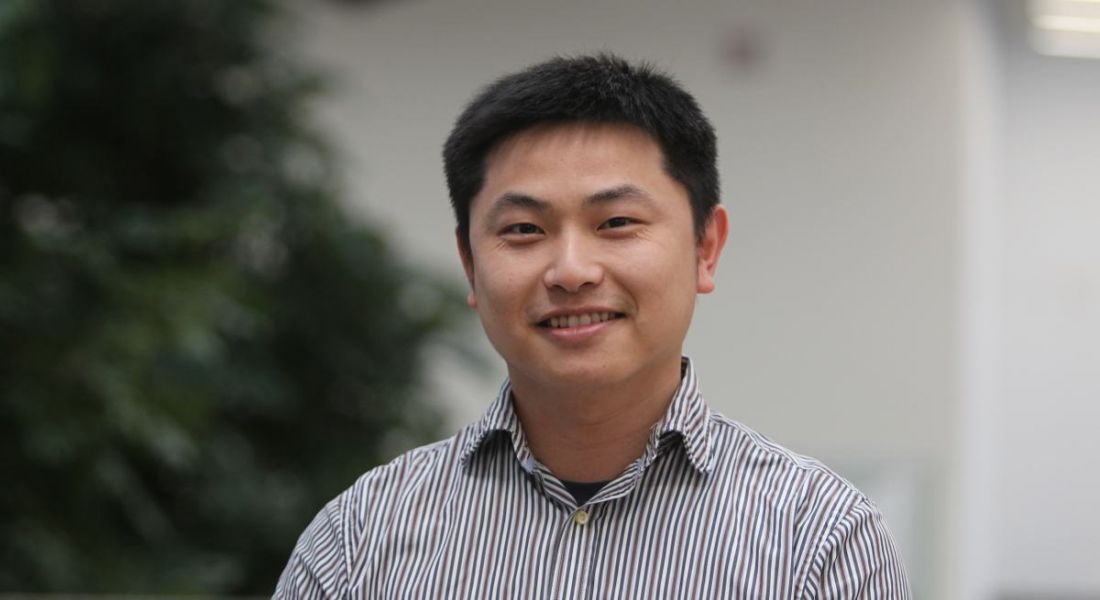What are the most common misconceptions about engineering as a career? We spoke to Yiyang Sun, an electronic engineer at BD, to investigate.
As we are in the middle of the 2018 edition of Engineers Week, it’s a good time to reflect on how the perception of engineering as a career can often differ from the reality.
Perceptions about engineering as a job tend to be shaped by the (unwarranted) dichotomy that people assume exists between creative and STEM industries.
The idea that engineering is completely bereft of creativity couldn’t be further from the truth; often, creativity is essential to coming up with an optimal solution.
Additionally, the stereotype that STEM workers such as engineers work in solemn isolation is patently false. Coming up with the best design for the job is almost always a collaborative effort.
There’s no one better to attest to this than Yiyang Sun, an electronic engineer at BD. We spoke to him about how his daily work in design and development, and how he maintains productivity.
What is your role within BD?
I am an electronic engineer working on medical instruments, concentrating in electrical system and electronic application design and development.
If there is such a thing, can you describe a typical day in your job?
My day normally starts with a daily scrum board meeting with our Dutch team.
We will update the previous day’s work and discuss issues with all team members working in different locations, and will organise further meetings with our stakeholders.
Following the scrum meeting, I will plan out my day in order to develop the solution proposed in the meeting, which could range from tasks as large as implementing the system strategy, to as small as changing the screw position on the assembly.
Some solutions require close collaboration with the supplier, so efficient communication should take place to ensure the supplier received and understands the requirements. I will then update the design with suppliers’ fabrication to meet the project target.
Throughout the day, I will research design regulations and test instrument designs alongside the mechanical and software teams.
I am also responsible for providing electrical or electronic support for other projects, or technical suggestions and solutions. Every day is busy and challenging, but also varied and enjoyable.
What types of project do you work on?
At the moment, I am working on a project to upgrade a total lab automation system with more modularity design to reduce the cost per system.
It is very challenging because it requires creative ideas to make a system with more flexibility for the different configurations it may require in the future. I also need to estimate issues and provide solutions to avoid these issues.
I have been working on this specific project for nearly a year with more than 20 other colleagues from different departments.
What skills do you use on a daily basis?
I mainly use technical, research and design skills across a number of types of software and tools.
I will use a 3D-modelling software called Solid Work to communicate with mechanical engineers to discuss the impact designs have on electronics. I also use Altium (PCB design tool) to generate schematics and PCB layouts.
What is the hardest part of your working day?
The most difficult part of my job is investigating global regulations and aligning the design to the required regulation.
Rather than solution dictating the design, you have to think how to design will fit the solution, which encourages creativity and problem-solving.
Do you have any productivity tips that help you through the working day?
I find it really beneficial to plan review meetings as early as possible.
Writing a summary email to all stakeholders aligns everyone to the same message, focuses the agenda and encourages everyone to be as prepared as possible to develop solutions.
When you first started this job, what were you most surprised to learn was important in the role?
I was working in college and a small company before I joined BD, and I was unaware of how strict design control is.
I was surprised to learn how every design requires constant reviews by the core team before a broader team reviews it.
While getting a design approved is a lengthy process, it ensures high-quality design. Short-lived frustration for long-term success is a good way to look at the process.
How has this role changed as medtech has grown and evolved?
I think there has been greater interdependence between the various software divisions.
As the sector grows, divisions are becoming more specialised, so we work across various teams rather than together as one core team.
For example, in my current project, the mechanical, electronic, software and IT teams need to all work with each other.
Close and effective collaboration ensures that the design is easy to fabricate and service, and is of the highest quality.
What do you enjoy most about the job?
I enjoy our review meetings, as colleagues try their best to spot parts of the design that could be improved.
You learn a lot about design and processes during these discussions and debates, and it makes you a better designer. Every day is a school day and I enjoy the challenges that brings.
Want to work at BD? Check out the BD careers page for current vacancies.




